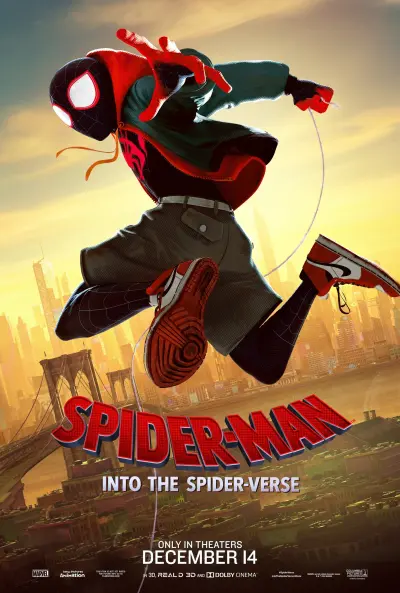
Let us delve into the vibrant and captivating universe of Spider-Man: Into the Spider-Verse. At the core, the film presents a refreshing interpretation of the Spider-Man saga, focusing on teenage Brooklynite Miles Morales as he transforms into a superhero following a bite from a genetically-altered spider. As an origin narrative, it follows Miles's evolution from an ordinary youth grappling with academic pressures and familial expectations into a superhero.
Miles's odyssey, however, is neither isolated nor uncomplicated. He inadvertently encounters an interdimensional gateway created by the nefarious Kingpin, whose aim is to penetrate alternate universes to reconnect with his deceased relatives.
The gateway, which defies the confines of a singular universe, brings forth a heterogeneous array of Spider-People from diverse dimensions, including Peter B. Parker, Spider-Gwen, Spider-Man Noir, Peni Parker, and Spider-Ham. Each character is distinct, with particularities in design, personality, and history, crafting a multiplicity of narratives that celebrate the Spider-Man persona's diversity and universality. Their united objective is to halt Kingpin's perilous multiverse endeavor, which poses a threat to the very fabric of reality.
Interwoven within the plot are themes of identity, family, and accountability. Miles wrestles with his burgeoning sense of self and purpose, echoing traditional Spider-Man themes but expanded through his Afro-Latino heritage and cultural interests such as graffiti art and music. The film emphasizes the significance of community and mentorship as seasoned Spider-People guide Miles in harnessing his emerging abilities and understanding the accompanying obligations. It challenges the conventional concept of the lone hero and promulgates the idea that heroism is a collaborative endeavor, a mutual obligation.
The film's premise reinforces the empowering message that anyone is capable of being the hero. It dismantles preconceived constraints on who can assume the mantle of a superhero, encapsulated in the potent phrase, "Anyone can wear the mask. You could wear the mask." This inclusive mantra resonates profoundly in today's culturally aware environment, appealing to a global audience with the proposition that heroism transcends ethnicity, gender, or age. To numerous admirers, this notion is stirring and revolutionary, raising the motion picture above the status of an ordinary superhero tale.
The visual portrayal of each Spider-Person's universe incorporates distinctive art styles, merging comic book aesthetics with innovative animation practices. This approach delights viewers visually while simultaneously rendering homage to the original comic books and their manifold interpretations over time. The cultural interplay and amalgamation of the various Spider-People instill humor and substance, establishing a scenario where the convergence of worlds is more a jubilant celebration than a disordered entanglement.
In conclusion, Spider-Man: Into the Spider-Verse is a cinematic triumph, extending the horizons of storytelling within animated films and the broader superhero genre. It prompts viewers to reflect upon their potential for heroism, inspiring them to embrace risks just as Miles does, metaphorically in their lives and literally as he soars through the New York City skyline. The plot weaves together elements of comedy, action, and poignancy, conveying a theme as spirited as its animation: no matter one's background, each individual has the potential to make an impact.

